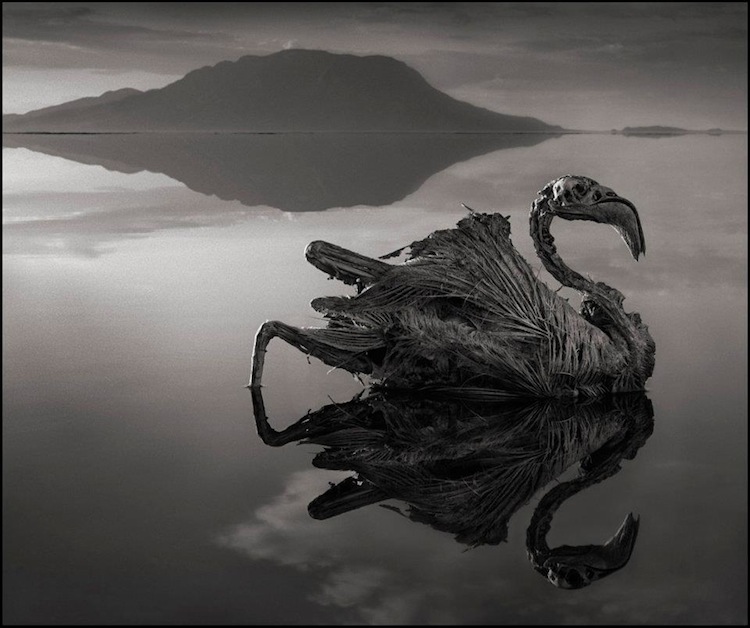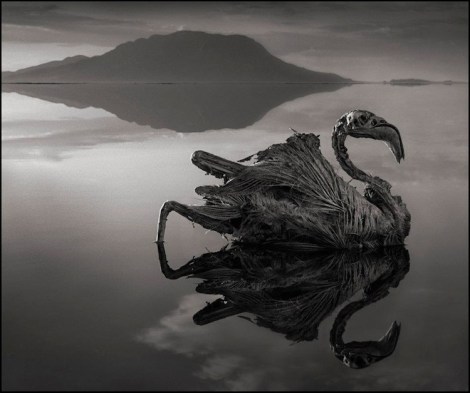In 2011, when photographer Nick Brandt was traveling in East Africa, he visited some of the most alkaline lakes in the entire world. Lake Natron, for instance, has an average pH level between 9 and 11 — seawater generally has a pH between 7 and 9. Flamingos use the lake as a breeding ground because most animals are smart enough to stay away. But some aren’t.
Ethan Kinsey, who travelled with Brandt, remembered:
We scoured the shores picking up a variety of birds including hornbills, flamingoes, starlings, doves, bee-eaters, mouse-birds, and Quelea that had been mummified by the salts in the water. The small invertebrates, fish, and bats that stood frozen in their death pose were fascinating.
It looks like they’re cursed, unlucky enough to have been in the way of some Disney villain’s spell. Here’s Brandt:
“I took the creatures exactly as I found them on the shoreline, and then placed them in ‘living’ positions, bringing them back to ‘life’, as it were. Reanimated, ‘alive’ again in death.”
He also explained to the New Scientist what attracted him to these stone creatures:
“I could not help but photograph them,” he says. “No one knows for certain exactly how they die, but it appears that the extreme reflective nature of the lake’s surface confuses them, and like birds crashing into plate glass windows, they crash into the lake.”
God, this is just so spooky and goth! We totally want to go. But, uh, not actually swim.




